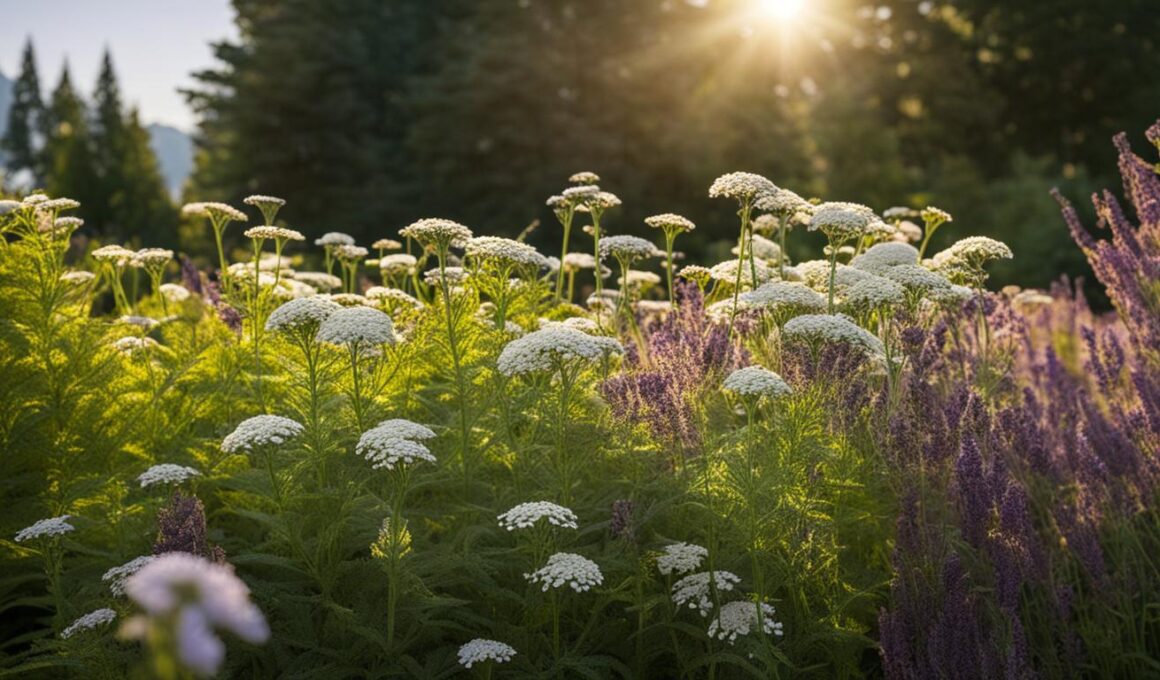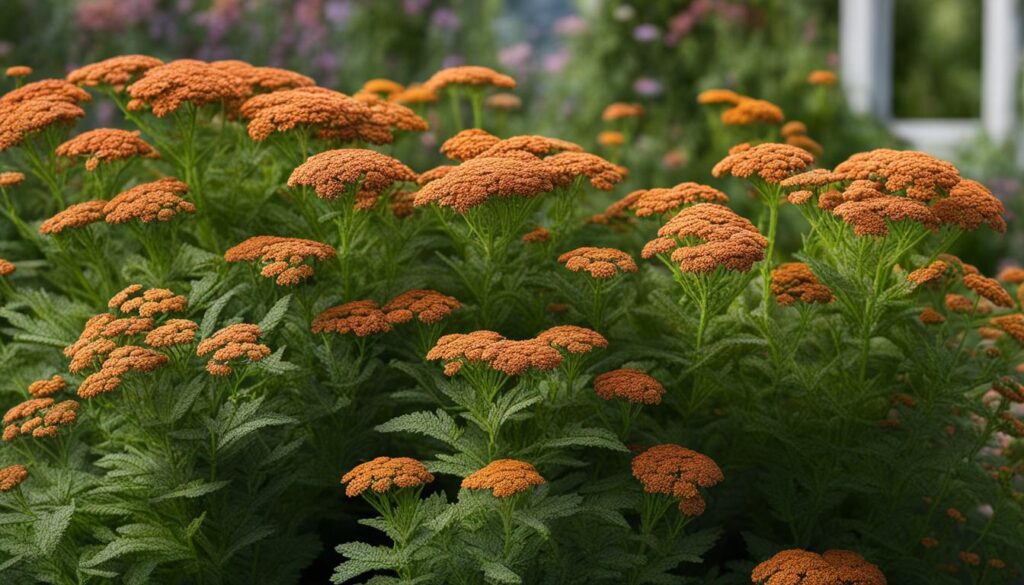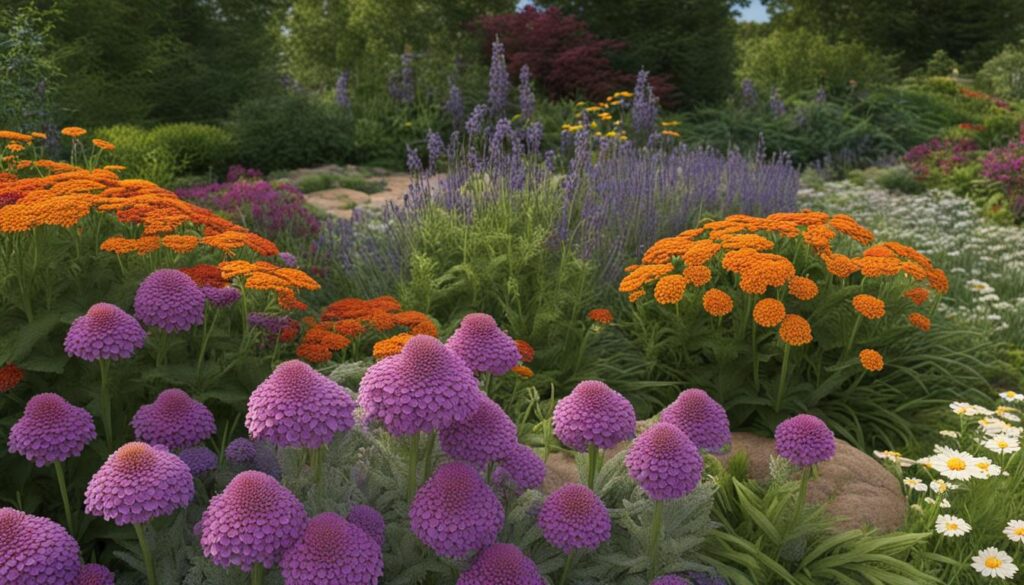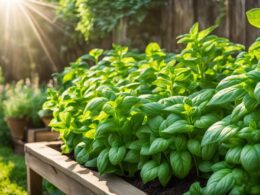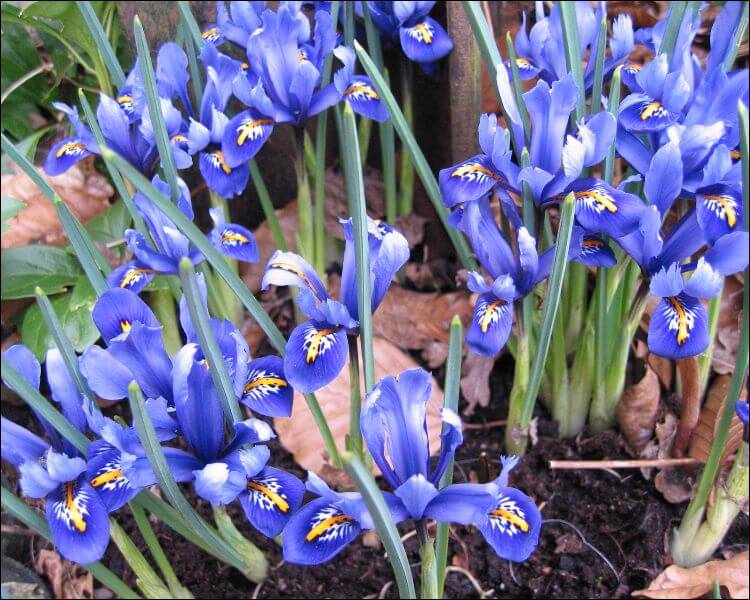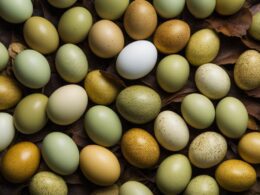Companion planting is an effective technique that involves planting different species of plants together to enhance their growth and health. If you’re looking to create a thriving garden ecosystem, incorporating yarrow companion plants is a great choice. Yarrow has the unique ability to attract beneficial insects, repel pests, and improve soil health, making it an ideal companion plant for your garden.
Post Summary
- Companion planting yarrow can attract beneficial insects to your garden and promote a healthy ecosystem.
- Yarrow does not have strong pest-repelling properties but attracts beneficial insects that can help control garden pests.
- Some of the best companion plants for yarrow include tomatoes, peppers, cabbage, chamomile, and various herbs.
- Yarrow thrives in full sun and well-drained soil, and it is a hardy plant that can tolerate various growing conditions.
- By planting yarrow alongside compatible crops, you can create a symbiotic relationship that promotes healthier growth and reduces the need for pesticides.
What is Yarrow?
Yarrow, also known as Achillea millefolium, is a native plant to temperate regions of the Northern Hemisphere. This herbaceous perennial plant features feathery leaves and clusters of flowers in various colors. With its hardy nature and drought tolerance, yarrow is well-suited for different soil types and light conditions, making it a versatile addition to any garden.
| Pests | Natural Predators |
|---|---|
| Aphids | Ladybugs, lacewings, hoverflies |
| Whiteflies | Ladybugs, lacewings |
| Caterpillars | Ladybugs, lacewings |
By incorporating yarrow into your garden, you can create a pest-resilient and thriving ecosystem. The presence of natural predators attracted to yarrow can effectively control pests like aphids, whiteflies, and caterpillars, reducing the need for chemical interventions. As a result, your garden can flourish in a healthier and more sustainable way.
Yarrow Companion Plants
When it comes to companion planting, yarrow is a versatile plant that pairs well with a variety of crops in your garden. By strategically choosing companion plants for your yarrow, you can create a symbiotic relationship that promotes healthier growth and reduces the need for pesticides. Let’s explore some of the best companion plants for yarrow.
Companion Plants for Yarrow
| Crop | Companion Plant | Benefits |
|---|---|---|
| Tomato | Marigold | The strong scent of marigold can help deter pests that commonly affect tomatoes, such as aphids and nematodes. |
| Pepper | Basil | Basil repels aphids, spider mites, and other pests that can damage pepper plants. It also enhances the flavor of peppers when grown together. |
| Cabbage | Nasturtium | Nasturtium acts as a trap plant, attracting pests like aphids away from cabbage. Its flowers are edible and make a colorful addition to salads. |
| Chamomile | Thyme | Thyme helps repel pests like cabbage worms and cabbage loopers that can damage chamomile plants. It also enhances the flavor of chamomile tea. |
| Herbs | Yarrow | Growing yarrow alongside other herbs like basil, oregano, and thyme can attract beneficial insects that control common pests while improving overall garden health. |
These are just a few examples of companion plants that work well with yarrow. By incorporating these companion plants into your garden, you can create a diverse ecosystem that supports the needs of beneficial insects, repels pests, and promotes healthier growth for your crops.
Remember to consider the specific growing requirements of each plant and plan your garden layout accordingly. Pay attention to spacing and ensure that each plant has enough room to grow and thrive. With thoughtful companion planting, you can cultivate a vibrant and thriving garden that benefits both your plants and the environment.
Planting Yarrow
When it comes to planting yarrow, there are a few key factors to consider to ensure optimal growth and health. Yarrow thrives in full sunlight, so choose a location in your garden that receives at least six hours of direct sunlight per day. While yarrow can tolerate some light shade, it will perform best in sunny spots.
Well-drained soil is essential for yarrow, as it does not tolerate wet or waterlogged conditions. Prepare the soil by ensuring it is slightly alkaline and rich in organic matter. This can be achieved by adding compost or well-rotted manure to the soil before planting. Yarrow is also drought-tolerant, so it is important to avoid overwatering. Water your yarrow sparingly and only when the top inch of soil feels dry.
Mulching can be beneficial for yarrow as it helps retain moisture in the soil and suppresses weed growth. Apply a layer of organic mulch around the base of the plant, taking care not to cover the crown. This will also help regulate soil temperature and prevent moisture evaporation. While minimal pruning is required for yarrow, deadheading spent blooms can help promote more flowers and keep the plant looking tidy.
In summary, to successfully plant yarrow in your garden, choose a sunny location with well-drained soil. Prepare the soil by adding organic matter and ensure proper watering practices to avoid overwatering. Mulching can help retain moisture and suppress weeds, while minimal pruning can keep the plant healthy and productive.
Growing Yarrow
Yarrow is a hardy plant that can thrive in various growing conditions, making it a versatile addition to any garden. It is known for its tolerance to drought and its ability to withstand different soil types and light conditions. However, yarrow is susceptible to powdery mildew, especially in humid environments. To ensure the success of your yarrow plants, it is important to provide proper care and attention.
One key factor in growing yarrow is ensuring good air circulation around the plant. Powdery mildew thrives in stagnant air, so it is essential to plant yarrow in a location with adequate airflow. Avoid overcrowding and allow for sufficient spacing between plants to promote better air circulation and reduce the risk of powdery mildew.
When it comes to watering, yarrow prefers well-drained soil. Overwatering can lead to root rot and other diseases. Water yarrow plants deeply but infrequently, allowing the soil to dry out between waterings. This helps promote the development of deep roots, making the plant more resilient and better equipped to handle drought conditions.
Yarrow is a nutrient-rich plant that can improve soil health. Its deep roots help loosen compacted soil, allowing for better water infiltration and nutrient uptake. As yarrow decomposes, it adds organic matter to the soil, enhancing its fertility. This makes yarrow an excellent choice for gardeners looking to improve the quality of their soil naturally.
Yarrow Planting and Care Tips:
- Choose a location with good air circulation to prevent powdery mildew.
- Water yarrow deeply but infrequently, allowing the soil to dry out between waterings.
- Ensure well-drained soil to avoid waterlogged conditions.
- Consider mulching around yarrow plants to help retain moisture and suppress weeds.
- Plant yarrow in nutrient-rich soil or add compost to improve soil fertility.
- Prune yarrow plants after blooming to promote more flowers.
By following these tips, you can enjoy the beauty and benefits of yarrow in your garden while ensuring its optimal growth and health.
Conclusion
By incorporating yarrow companion planting in your garden, you can create a healthy and thriving ecosystem. The presence of yarrow attracts beneficial insects like bees and butterflies, promoting pollination and ensuring the growth of your plants. Additionally, yarrow helps repel pests by inviting natural predators such as ladybugs and lacewings, reducing the need for harmful pesticides.
Not only does yarrow contribute to the overall health of your garden, but it also improves soil quality. Its deep roots help loosen compacted soil and accumulate nutrients, resulting in nutrient-rich soil that supports the growth of other plants. This natural soil improvement reduces the reliance on synthetic fertilizers, making your garden more sustainable.
With its numerous benefits, including attracting beneficial insects, repelling pests, and enhancing soil health, yarrow makes an ideal companion plant. By incorporating yarrow into your garden design, you can create a vibrant and thriving space that not only looks beautiful but also supports a healthy and balanced ecosystem.
FAQ
What are companion plants?
Companion plants are different species of plants that are planted together to enhance their growth and health.
Why should I companion plant yarrow?
Companion planting yarrow can attract beneficial insects to your garden, repel pests, attract pollinators, and improve soil health.
What are the best companion plants for yarrow?
Some of the best companion plants for yarrow include tomatoes, peppers, cabbage, chamomile, and herbs like basil, oregano, and thyme.
How do I plant yarrow?
Yarrow thrives in full sun and well-drained soil. Prepare the soil, plant yarrow from seeds or transplants, and provide proper spacing and watering.
Does yarrow repel pests in the garden?
While yarrow does not have strong pest-repelling properties, it attracts beneficial insects like ladybugs, hoverflies, and lacewings that are natural predators of common garden pests.
How can yarrow improve soil health?
Yarrow’s deep roots help loosen compacted soil, accumulate nutrients, and add organic matter as it decomposes. Its nitrogen-fixing ability reduces the need for synthetic fertilizers.
How do I prevent powdery mildew on yarrow?
Plant yarrow in a location with good air circulation, avoid overhead watering, and ensure proper care to prevent powdery mildew in humid conditions.
What are the Best Companion Plants for Both Yarrow and Tulips in a Garden Setting?
When planning a garden, consider planting yarrow and tulips together for a stunning display. Yarrow’s feathery foliage complements the vibrant tulip blooms, creating a harmonious contrast. Additionally, both plants attract beneficial pollinators and provide a natural pest deterrent. In the tulip vs rose comparison, yarrow and tulips make excellent companions for a beautiful and thriving garden.





